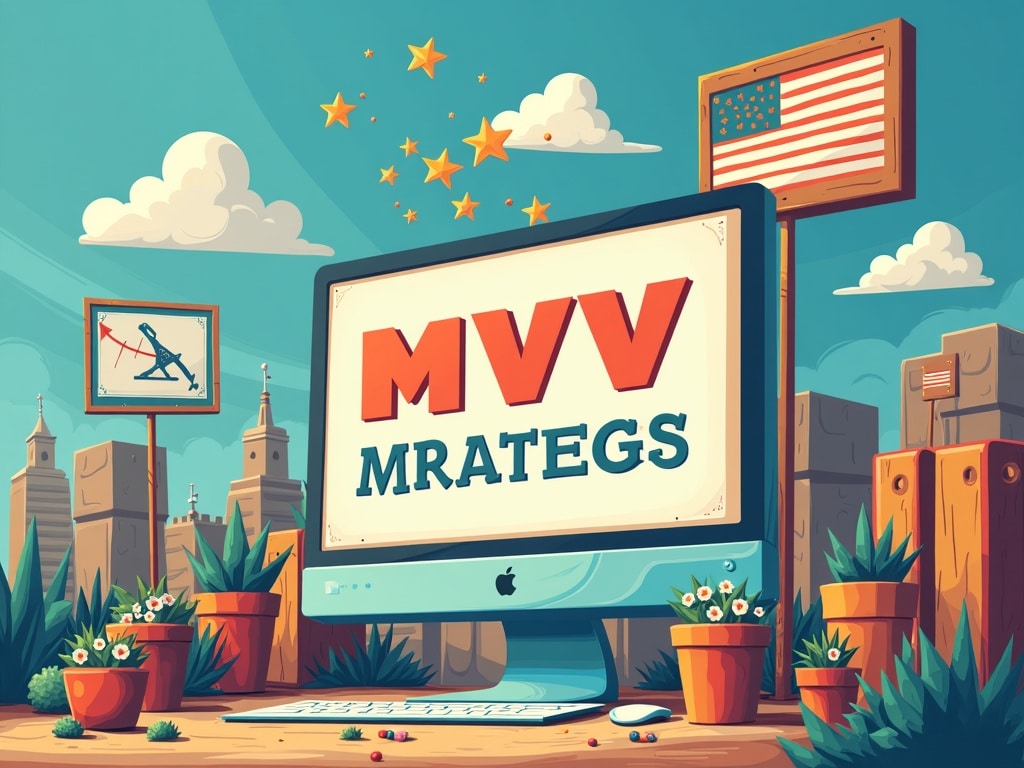Mastering the Single-Feature MVP Strategy: Launch Lean, Learn Fast
Imagine you're building a skyscraper. Would you start by constructing every floor, every room, all at once? Of course not. You'd lay the foundation, build the core structure, and then expand incrementally. The same logic applies to launching a digital product. This is where the brilliance of the single-feature Minimum Viable Product (MVP) strategy comes into play. It's about launching lean, learning fast, and building what your users *actuallywant, not what you *thinkthey want.
Understanding the Core of the Single-Feature MVP
The single-feature MVP isn't just about building a basic product; it's about hyper-focus. It's about identifying the *oneessential feature that delivers core value to your target users and building *onlythat. Think of it as the North Star guiding your product development. It's the purest expression of your product's purpose.
Why Single-Feature? The Power of Focus
Why not launch with a few features? Because complexity breeds confusion, wasted resources, and delayed learning. Launching with a single, well-defined feature offers several key advantages:
- Faster Time to Market: Less development time means quicker validation of your product idea.
- Reduced Development Costs: Focusing on a single feature minimizes expenses, especially crucial for startups with limited budgets.
- Clearer User Feedback: Understanding how users interact with a single feature provides laser-focused insights.
- Reduced Risk: Validating your core assumption before investing heavily in additional features mitigates the risk of building something nobody wants.
- Enhanced Agility: Adapting to user feedback and market changes is easier when you have a smaller, more nimble product.
Defining Your ‘One Thing': Identifying the Core Value Proposition
The cornerstone of a successful single-feature MVP lies in identifying your core value proposition. What problem are you solving? What unique benefit do you offer? This requires ruthless prioritization and a deep understanding of your target audience. Ask yourself:
- What is the *mostpressing need for your target user?
- What is the *simplestsolution to address that need?
- What is the *one thingthat users would be willing to pay for?
The answers to these questions will guide you towards identifying your single, essential feature. Don't fall into the trap of thinking you need to impress users with a vast array of functionalities. Instead, focus on solving a problem effectively and efficiently with a single, well-executed feature.
The Single-Feature MVP in Action: Real-World Examples
The single-feature MVP isn't just a theoretical concept; it's been successfully employed by numerous companies. Let's explore a few examples:
Buffer: The Scheduling Solution
Buffer, the popular social media management platform, started with a simple feature: scheduling tweets. Initially, it allowed users to schedule posts to Twitter only. This laser focus allowed them to validate the demand for a social media scheduling tool, gather user feedback, and iterate rapidly. Once they confirmed the core value proposition, they expanded to other platforms like Facebook, Instagram, and LinkedIn.
Foursquare: Location Check-Ins
Foursquare, the location-based social networking app, initially focused solely on letting users check in to locations. This core feature drove user engagement and allowed Foursquare to gather valuable data about user behavior and popular places. Over time, they added features like tips, recommendations, and badges, but the initial focus on check-ins was crucial to their early success.
Dropbox: File Synchronization
Dropbox famously launched with a simple demo video showcasing its core feature: seamless file synchronization across devices. While the underlying technology was complex, the user experience was incredibly simple and focused. This allowed them to gauge interest and validate the need for a cloud-based file storage solution before investing heavily in development.

Building Your Single-Feature MVP: A Step-by-Step Guide
Ready to embark on your single-feature MVP journey? Here's a step-by-step guide to help you navigate the process:
Step 1: Define Your Target Audience and Problem
Clearly define your target audience and the specific problem you're solving for them. Conduct thorough market research to understand their needs, pain points, and existing solutions. Create detailed user personas to represent your ideal customers.
Step 2: Identify Your Core Value Proposition
Based on your understanding of your target audience and their problem, identify your core value proposition. What unique benefit do you offer? What makes your solution different and better than existing alternatives?
Step 3: Prioritize Features and Select the Most Essential One
Brainstorm a list of potential features that could address the problem you're solving. Then, ruthlessly prioritize these features based on their impact on your core value proposition and their feasibility to build. Select the single, most essential feature that delivers the most value to your users.
Step 4: Design and Develop Your MVP
Focus on building a user-friendly and functional MVP that showcases your chosen feature effectively. Don't worry about adding bells and whistles or polishing every detail. Prioritize speed and efficiency to get your product into the hands of users as quickly as possible.
Step 5: Gather User Feedback and Iterate
Once your MVP is launched, actively solicit feedback from your users. Use surveys, interviews, and analytics tools to understand how they're interacting with your product and what they like and dislike. Be open to criticism and willing to iterate based on the feedback you receive.
Step 6: Measure and Analyze Results
Track key metrics to measure the success of your MVP. These metrics might include user engagement, conversion rates, customer satisfaction, and revenue. Analyze the data to identify areas for improvement and inform future development decisions.
Common Pitfalls to Avoid
While the single-feature MVP strategy offers numerous advantages, it's important to be aware of potential pitfalls:
- Feature Creep: Resist the urge to add additional features before validating your core value proposition. Stick to your single, essential feature and avoid scope creep.
- Ignoring User Feedback: User feedback is crucial for iterating and improving your product. Don't dismiss or ignore user feedback, even if it's negative.
- Premature Scaling: Don't scale your product or marketing efforts before validating your core assumptions and achieving product-market fit.
- Lack of Focus: Maintain a laser focus on your single feature and avoid getting distracted by shiny objects or competitor offerings.
- Perfectionism: Remember that an MVP is not meant to be perfect. Focus on delivering value to your users and iterate based on their feedback.
The Future of Product Development: Embracing the Lean Approach
The single-feature MVP strategy is a powerful tool for building successful products in today's rapidly evolving market. By embracing the lean approach and focusing on validated learning, you can minimize risk, maximize efficiency, and build products that truly resonate with your target audience. So, ditch the complex feature roadmaps and embrace the power of one thing. Your users (and your budget) will thank you for it.

